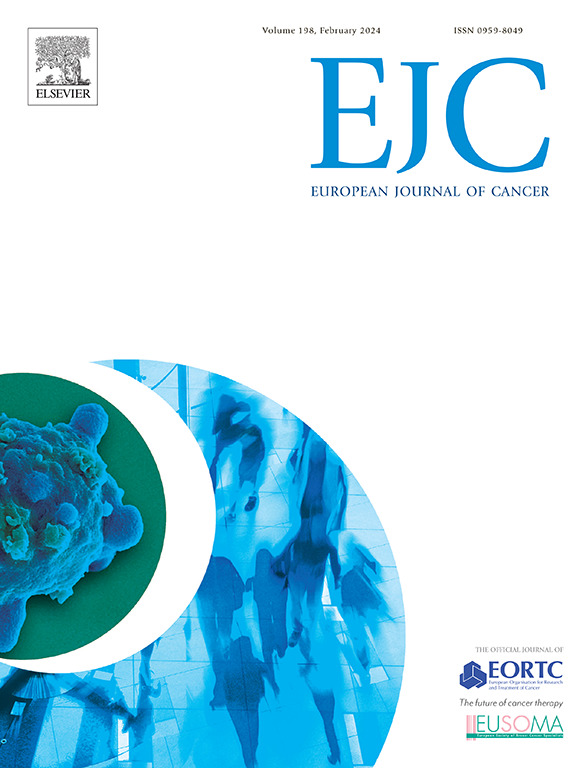Matching-adjusted indirect comparison of endoscopic and craniofacial resection for the treatment of sinonasal cancer invading the skull base
IF 7.6
1区 医学
Q1 ONCOLOGY
引用次数: 0
Abstract
Aim
The aim of this study was to compare the efficacy and safety of endoscopic endonasal approaches (EEA) with craniofacial resection (CFR) for sinonasal cancers invading the skull base, using an unanchored matching-adjusted indirect comparison (MAIC).
Methods
A MAIC approach was used to analyse data from two large cohorts: the MUlti-institutional collaborative Study on Endoscopically treated Sinonasal cancers (MUSES) cohort, comprising sinonasal cancer patients treated endoscopically, and a historical CFR cohort reported by Ganly et al. Individual patient data were available only for the first cohort. Patients with olfactory neuroblastomas were excluded. Key prognostic factors were used to match and adjust the two cohorts, minimising selection bias. The primary endpoint was overall survival (OS), with secondary endpoints including recurrence-free survival (RFS), perioperative mortality, complication rates, and resection margins.
Results
A total of 724 EEA-treated and 334 CFR-treated patients were included. EEA showed significantly improved OS before (HR= 2.33, 95 % CI= 1.88–2.87) and after MAIC adjustment (HR= 1.93, 95 % CI= 1.60–2.34). Observed RFS was higher in the EEA group (HR= 1.39, 95 % CI = 1.14–1.69) but no longer differed after adjustment (HR= 1.06, 95 % CI= 0.91–1.23). EEA was associated with significantly better Disease Specific Survival (HR= 1.71, 95 % CI = 1.39–2.13), lower perioperative mortality (OR= 8.12, 95 % CI= 3.45–36.7) and fewer complications than CFR (OR= 3.68, 95 % CI= 2.47–5.42).
Conclusion
In this MAIC study based on the 2 largest cohorts of sinonasal cancer with skull base invasion, EEA offered comparable oncologic outcomes to CFR with reduced morbidity, supporting it as a valid alternative when performed in expert centres.
求助全文
约1分钟内获得全文
求助全文
来源期刊

European Journal of Cancer
医学-肿瘤学
CiteScore
11.50
自引率
4.80%
发文量
953
审稿时长
23 days
期刊介绍:
The European Journal of Cancer (EJC) serves as a comprehensive platform integrating preclinical, digital, translational, and clinical research across the spectrum of cancer. From epidemiology, carcinogenesis, and biology to groundbreaking innovations in cancer treatment and patient care, the journal covers a wide array of topics. We publish original research, reviews, previews, editorial comments, and correspondence, fostering dialogue and advancement in the fight against cancer. Join us in our mission to drive progress and improve outcomes in cancer research and patient care.
 求助内容:
求助内容: 应助结果提醒方式:
应助结果提醒方式:


